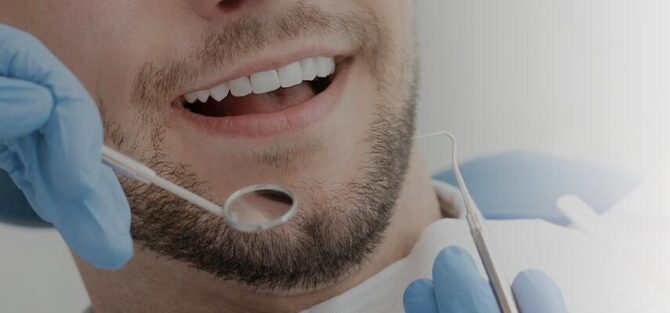The clinical picture of fluorosis describes an excessive supply of fluorine into the body over a longer period of time. Doctors differentiate between skeletal fluorosis, which affects bone structure, and dental fluorosis. Fluorosis is common in countries that use drinking water fortified with fluorine.
- Fluorosis is a sign of damaged tooth enamel.
- The cause can be an excessive intake of fluorine.
- Toothpastes with too high a fluorine content can cause long-term changes, especially in young children.
- The final disposal is very costly.
What is fluorosis?
Fluorine is considered to be a preventive measure against tooth decay. It is not for nothing that many toothpastes contain fluorine. According to medical professionals, one milligram a day is sufficient to serve a caries prophylactic purpose. In a higher dosage, however, the substance does the opposite. An overdose of fluorine will cause teeth to discolor and white spots to brown streaks to appear. A typical sign of a fluorine overdose is white teeth with brown streaks. This change is not only of a color, but also leads to the fact that the enamel is attacked and is significantly more susceptible to tooth decay.
A slight fluorosis is demonstrated by white spots on the enamel, but is usually harmless.
In order to define fluorosis as a clinical picture and to initiate appropriate medical steps, it must first be recorded to what extent the patient consumes fluorine. This also includes a drinking water analysis. The degree of the disease is then defined using a given table. This breaks down the degree of illness as follows:
| classification | features | |
| 0 | normal | Tooth enamel shows no changes compared to healthy teeth. |
| 1 | Questionable | Isolated white spots are visible on the tooth enamel. |
| 2 | Very mild | There are occasional opaque white spots on the tooth. The infected tooth surface makes up a maximum of 25 percent. |
| 3 | Mild | The tooth surface affected by opaque whitish stains is a maximum of 50 percent. |
| 4 | Medium difficulty | All teeth are affected and have brown stains that are classified as unaesthetic. |
| 5 | Heavy | All teeth and their enamel surfaces are affected. The teeth appear holey and are almost completely covered with brown stains. |
Fluorosis or tooth decay?
For the patient, it makes a significant difference whether he suffers from fluorosis or whether the teeth are affected by caries over a large area.
White spots on the teeth can also indicate initial caries . This preliminary stage of tooth decay can (and must) be reversed by adding fluoride. If the addition of fluoride is insufficient, small punctual holes may be necessary to heal the affected tooth enamel.
The white spots of fluorosis, on the other hand, are visually disturbing, but harmless. However, white spots on the teeth can also result from a genetic origin. They also arise when the body produces too much tooth enamel.
The brown spots of severe fluorosis, which look like tooth decay, need urgent treatment .
Remove fluorosis stains
If the first white spots appear on the teeth, a discussion with the dentist should clarify how these can be removed. Changing the toothpaste could be a solution if it has too high a fluorine content.
A final removal of the stains is not possible without further ado. The treatment is costly and has to be refreshed again and again. In most cases, all that remains is to slow down or stop the spread.
Prevent fluorosis
A critical age for fluorosis to develop is the time when children change their teeth. If the toothpaste used has too high a fluorine content, it is deposited on the teeth and can no longer be broken down. For prevention, parents should therefore ensure that toddlers use special children’s toothpaste. Supplements such as fluoride tablets should be avoided when using toothpaste containing fluorine at the same time. If in doubt, the dentist will help with recommendations for the right toothpaste.
